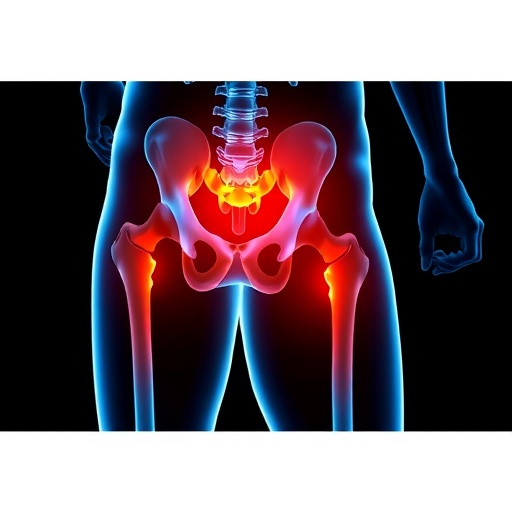In a groundbreaking study, an extensive systematic review and meta-analysis conducted by Sarkies, Testa, and Taylor shines a light on a critical aspect of elderly care: adherence to clinical guidelines concerning hip fracture management. Hip fractures represent a significant health concern, particularly among the aging population, leading to severe complications and a considerable burden on healthcare systems worldwide. The urgency of timely surgical intervention and early mobilization cannot be overstated, as these factors play a crucial role in enhancing patient outcomes. The research synthesized findings from multiple studies to assess the effectiveness of various interventions aimed at improving adherence to these guidelines.
The research team meticulously evaluated numerous studies to establish a comprehensive understanding of interventions that could bridge the gap between recommended practices and actual clinical implementations. By focusing on the time-sensitive nature of hip fracture treatment, the authors identified key areas where standard protocols may falter. The meta-analysis provided quantifiable evidence on how adherence to guidelines can profoundly impact recovery times, rehabilitation, and overall quality of life for patients post-fracture. Specifically, the synthesis of these studies underscores the clear link between timely surgery and early mobilization to reduced mortality rates and shorter hospital stays.
One of the notable findings of the piece is the varied effectiveness of different intervention strategies. While some programs facilitated quicker surgical decisions and more efficient allocation of surgical resources, others emphasized the importance of multidisciplinary teams in assessing patient readiness for surgery and rehabilitation. The review also highlighted the essential role of education—both for healthcare professionals and patients—in promoting better adherence to guidelines. By raising awareness and understanding around the recommended practices, stakeholders can foster an environment where timely interventions are prioritized.
Furthermore, the review delved into the psychological and social factors that often hinder swift surgical interventions. The authors pointed out that fear and anxiety can significantly delay patient access to necessary treatments. This factor is particularly prevalent among older adults, who may have other health issues that complicate decision-making regarding surgery. Addressing these concerns is vital for healthcare providers aiming to enhance adherence to guidelines, ultimately leading to improved patient outcomes. The sense of urgency surrounding hip fracture management can be invigorated through improved patient education and communication strategies.
In discussing the implications of their findings, the authors stress the importance of developing tailored interventions that cater to the unique needs of different healthcare settings. The reality is that a one-size-fits-all approach may not yield the desired outcomes across diverse populations. Therefore, healthcare providers must evaluate their specific contexts and patient demographics to implement the most suitable interventions. An adaptive approach will ensure that interventions are culturally competent and aligned with patients’ particular circumstances, thus promoting better adherence to treatment protocols.
Moreover, the research team acknowledges the role of technology in augmenting adherence to hip fracture guidelines. Telehealth services, electronic health records, and decision-support systems can streamline the treatment process, facilitating quicker surgical arrangements and more robust communication among care teams. By harnessing the power of technology, healthcare systems can create more efficient pathways to care. This aspect is especially relevant in light of increasing digital health innovations that are reshaping the landscape of medical interventions.
Amid these findings, the authors also call attention to the gaps in existing literature, suggesting areas for future research. There’s an urgent need for longitudinal studies that can assess the long-term effects of refined interventions on various health outcomes for hip fracture patients. Such studies could provide deeper insights into how adherence to guidelines influences not just immediate recovery, but also long-term health trajectories, particularly in the aging population. By fostering a vibrant research environment around hip fracture management, stakeholders can continue to evolve practices based on emerging evidence.
The systematic review also presents an opportunity for policymakers to reflect on existing healthcare frameworks and their alignment with current best practices. By ensuring that facilities adhere to internationally recognized guidelines, healthcare systems can improve resource allocation and, ultimately, patient outcomes. Policymakers have a crucial role in advocating for the necessary changes that enable a holistic approach to hip fracture management. Implementing reforms that prioritize guideline adherence could yield significant benefits for both patients and healthcare providers alike.
In conclusion, the findings from Sarkies, Testa, and Taylor’s systematic review and meta-analysis represent a substantial leap forward in our understanding of hip fracture management. The results not only underscore the importance of timely interventions but also emphasize the multifaceted approach required to enhance adherence to clinical guidelines. As healthcare continues to evolve, integrating insights from such comprehensive reviews into practice can pave the way for improved care for one of the most vulnerable patient populations—older adults suffering from hip fractures. This research serves as a robust foundation for ongoing efforts to refine treatment protocols, ensuring that patients receive the best possible care in their time of need.
The insights generated from this rigorous analysis call for immediate action within the healthcare community. Engaging healthcare professionals, patients, and policymakers together will be critical to create systemic changes that prioritize rapid surgical intervention and early mobilization for hip fracture patients. Ultimately, the overarching goal remains clear: to enhance patient longevity and quality of life while reducing healthcare costs associated with prolonged hospitalization and rehabilitation. The time is ripe for change, and this systematic review offers a clear roadmap for achieving better outcomes in hip fracture management.
The authors not only contribute significantly toward advancing the scientific discourse surrounding hip fractures but also bring to light the pressing challenges that accompany elderly care. With their meticulous research and thoughtful analysis, they have provided a framework that other researchers can build upon, ensuring that adherence to guidelines is at the forefront of discussions about best practices in geriatric care. As we move forward, it is imperative that these insights are translated into practical applications to foster an environment that encourages timely and effective interventions for all patients.
As the field of geriatrics continues to grapple with the complexities of care for aging individuals, studies like this serve as a beacon of hope and guidance. The emphasis on evidence-based practices and the call for a cohesive approach to care cannot be overstated. Healthcare providers, policymakers, and researchers must work collaboratively to prioritize the best possible outcomes for hip fracture patients, utilizing the insights gleaned from systematic reviews such as the one by Sarkies and colleagues. The dialogue must continue, and the commitment to improving patient care must remain steadfast.
Subject of Research: Interventions to improve hip fracture guideline adherence for time to surgery and early mobilization.
Article Title: Interventions to improve hip fracture guideline adherence for time to surgery and early mobilization: a systematic review and meta-analysis.
Article References:
Sarkies, M., Testa, L., Taylor, M.E. et al. Interventions to improve hip fracture guideline adherence for time to surgery and early mobilization: a systematic review and meta-analysis.
BMC Geriatr 25, 803 (2025). https://doi.org/10.1186/s12877-025-06240-w
Image Credits: AI Generated
DOI: 10.1186/s12877-025-06240-w
Keywords: Hip fracture, guideline adherence, time to surgery, early mobilization, systematic review, meta-analysis.
Tags: clinical guideline adherenceearly mobilization benefitselderly patient carehealthcare burden of hip fractureship fracture managementhospital stay durationinterventions for healthcare practicesmortality rates reductionpatient outcomes improvementrehabilitation after hip fracturessurgical intervention effectivenesssystematic review and meta-analysis





